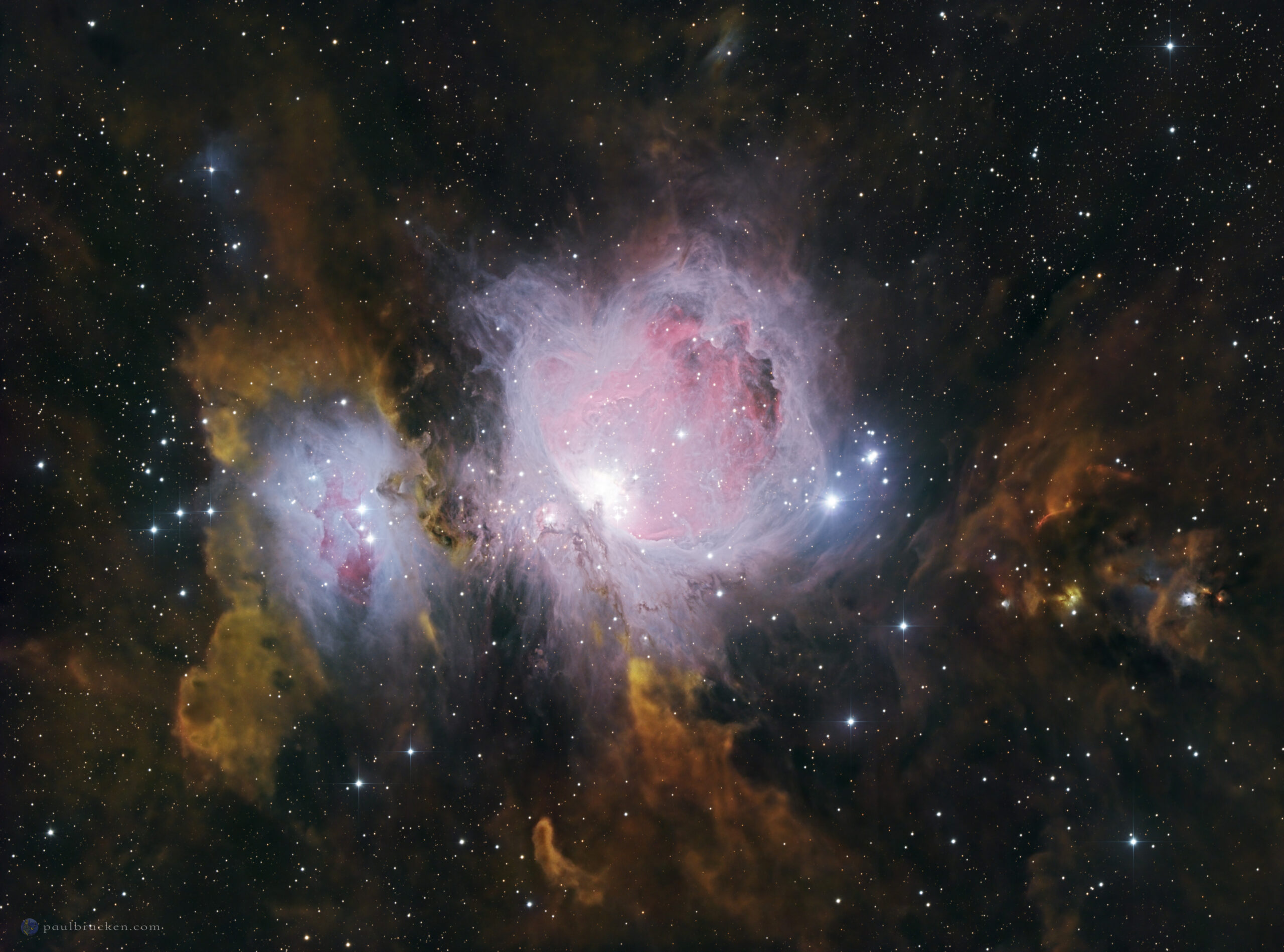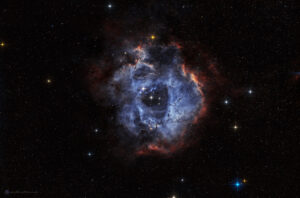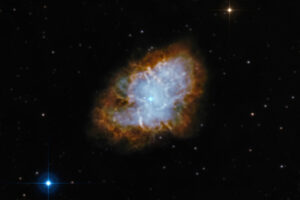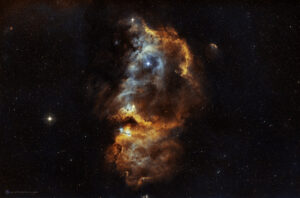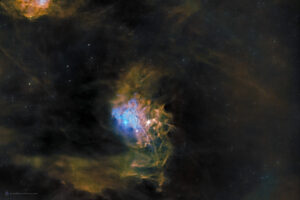Ok, I know what you’re thinking. Why has it taken me so long to photograph the Orion Nebula? At a little over a thousand light years away, it is the closest big star factory to Earth, making it one of the brightest deep space objects in the sky. You can get a pretty good image even with short exposure times, and with good eyesight and clear skies it can even be seen with the naked eye, as a hazy patch of light surrounding the middle star in Orion’s sword.
The challenge, of course, is to wait for the right season when Orion is visible in the night sky, and not obscured by a tree, or a neighbor’s house. And then you have to wait for the clouds to clear. Fortunately, conditions were right for me around the end of November to collect about 7 hours of data for this photo.
It’s a mesmerizing sight, with all of those swirling, organic-like patterns. You can find many close up views of this region taken by the Hubble Space Telescope in which you can see what are called proto-planetary disks. These are new planetary systems in the making, giving us a glimpse of what our own solar system might have looked like in the olden days, as the planets formed.
